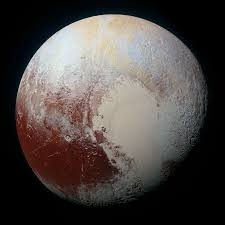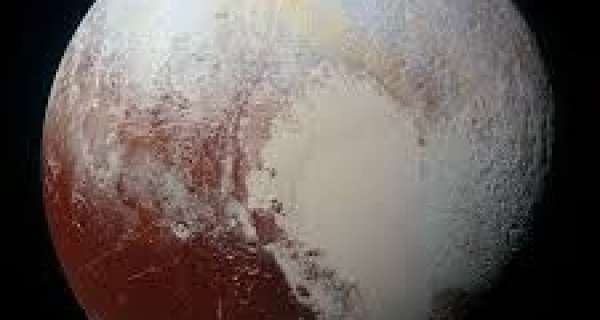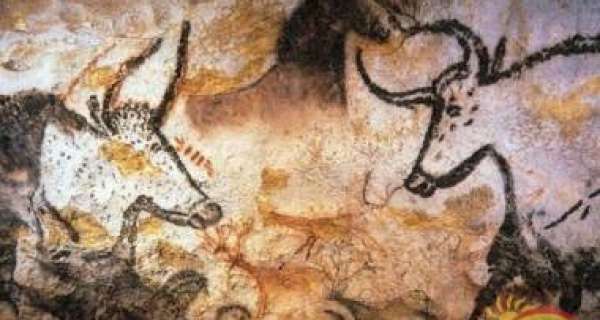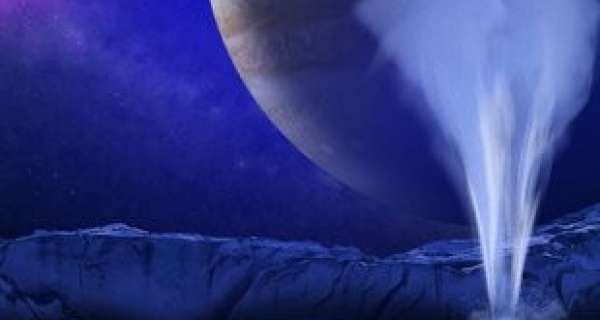Pluto used to be known as the smallest planet in our solar system, and the furthest planet from the sun. Pluto was discovered in 1930 by Clyde Tombaugh, an American astronomer. Pluto is over 5.8 billion km (3.6 billion miles) away, and it takes Pluto 248 years to orbit the sun. While many of the other planets orbit the sun in an elliptical orbit that is nearly circular, Pluto’s is very eccentric. This means that sometimes Pluto is closer to the sun than Neptune! Pluto is a little bit smaller than Earth’s moon.
Pluto was named by an eleven-year-old girl from England, who chose the name of the mythological guardian of the underworld. Pluto also has three moons of its own: Charon, Nix, and Hydra. Charon is about half the size of Pluto, but Nix and Hydra are very small.
Pluto is in a far away region of space called the Kuiper belt. The Kuiper belt is part of the solar system past Neptune, similar to an asteroid belt. It is filled with asteroids made of rock and metal, as well as “ices” (frozen gases).
Since its discovery in 1930, Pluto has been a bit of a puzzle:
It's smaller than any other planet - even smaller than Earth's moon.
It's dense and rocky, like the terrestrial planets (Mercury, Venus, Earth and Mars). However, its nearest neighbors are the gaseous Jovian planets (Jupiter, Saturn, Uranus and Neptune). For this reason, many scientists believe that Pluto originated elsewhere in space and got caught in the sun's gravity. Some astronomers once theorized that Pluto used to be one of Neptune's moons.
Pluto's orbit is erratic. The planets in our solar system all orbit the sun in a relatively flat plane. Pluto, however, orbits the sun at a 17-degree angle to this plane. In addition, its orbit is exceptionally elliptical and crosses Neptune's orbit.
One of its moons, Charon, is about half Pluto's size. Some astronomers have recommended that the two objects be treated as a binary system rather than a planet and satellite.
Pluto was originally classified as a planet, but is now known as a “dwarf planet”. In 2005, an American astronomer called Mike Brown thought that he had found a planet further out in the solar system than Pluto. This new planet was thought to be the tenth planet in the solar system, and was named Eris.
However, this prompted the the International Astronomical Union (IAU) to decide that “planet” actually needed to be defined, to see if Eris would fit into the definition. So, in 2006 the IAU decided that to be a planet, the object must:
● Orbit around the sun
● Be massive enough to be pulled into a the shape of a sphere by its own gravitational force; and
● Have ‘cleared the neighbourhood’ around its orbit. This means there must be no other bodies in its orbit that are not under its influence (like a moon).
Eris didn’t meet the criteria, and neither did Pluto! Namely, Pluto didn’t meet the third criteria, and so was downgraded from a planet to a dwarf planet in 2006. This dwarf planet definition was created by the IAU at the same time as the planet definition.
In the same year, NASA launched a mission to Pluto called New Horizons. New Horizons is going to the very edge of the solar system, and it will take approximately 9 years to reach Pluto. Astronomers now think that there may be thousands of dwarf planets in the solar system, but that they are too far away for us to be able to see them. They hope that if we can explore the Kuiper belt further with missions like New Horizons, more dwarf planets may be found.















